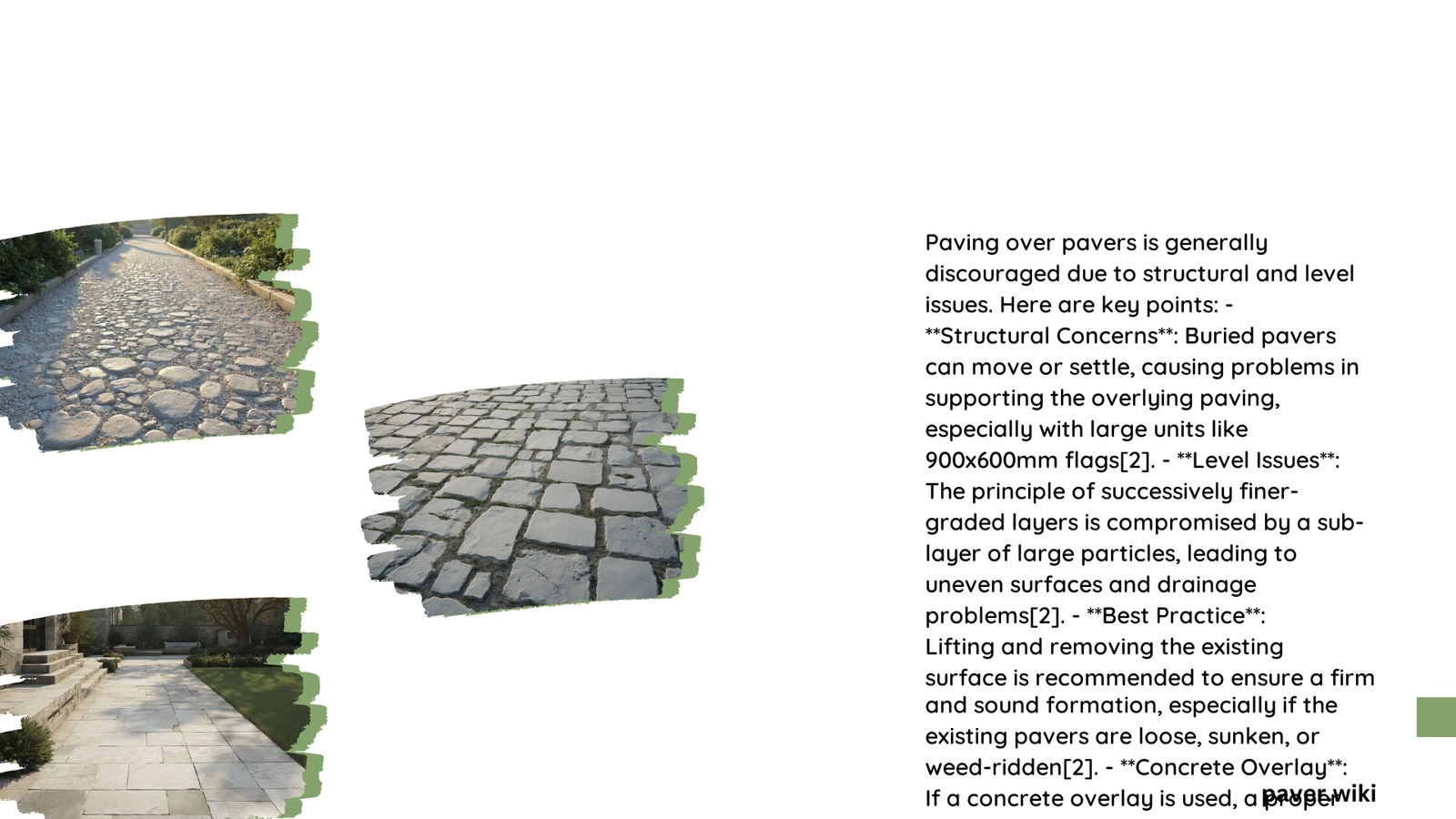Paving over existing pavers is a cost-effective and efficient way to revitalize outdoor spaces. This method involves installing new pavers directly on top of old ones, eliminating the need for removal and disposal. It offers benefits such as extended hardscape lifespan, reduced labor costs, and improved aesthetics. Suitable for various materials like porcelain and thin concrete pavers, this technique can transform patios, walkways, and driveways with minimal disruption.
What Are the Benefits of Paving Over Existing Pavers?
Paving over existing pavers offers several advantages:
- Extended Lifespan: Adding a new layer of durable pavers can increase the hardscape’s longevity by 20-30 years or more.
- Cost-Effectiveness: Eliminating the need for removal and disposal can save $4-$11 per square foot.
- Aesthetic Enhancement: New pavers can dramatically improve the look of your outdoor space.
- Reduced Labor: Minimal excavation and preparation lead to lower installation costs.
- Quick Installation: The process is faster than complete replacement, causing less disruption.
Which Materials Are Suitable for Paving Over Existing Pavers?

Two primary materials are recommended for paving over existing pavers:
Porcelain Pavers
- Properties: Durable, weather-resistant, low-maintenance
- Thickness: 30-45 mm for overlay purposes
- Compatibility: Can be installed over traditional pavers, concrete slabs, or other stable surfaces
Thin Concrete Pavers
- Properties: Easy to install, durable despite thinness
- Thickness: 1″ for exterior projects, 5/8″ for interior remodels
- Compatibility: Suitable for installation over existing concrete slabs or stable surfaces
How to Install New Pavers Over Existing Ones?
Follow these steps to pave over existing pavers:
- Assessment and Preparation
- Inspect the existing paver area for stability and levelness
-
Clean the surface thoroughly
-
Surface Preparation
- Apply polymeric sand or dry mudset to fill cracks and seams
-
Ensure proper water drainage
-
Laying New Pavers
- Begin installation, ensuring proper alignment and spacing
-
Use a level and rubber mallet for evenness
-
Final Touches
- Fill gaps with polymeric sand
- Apply sealant if desired
Required Tools:
- Polymeric sand or dry mudset
- Level
- Rubber mallet
- Tamping tool
- Broom or blower
Estimated Timeframes:
- Preparation: 1-2 days
- Installation: 2-4 days (area-dependent)
- Finishing: 1 day
What Are the Potential Challenges of Paving Over Existing Pavers?
While paving over existing pavers offers many benefits, there are some challenges to consider:
- Drainage Issues: Ensure proper slope for water runoff
- Surface Stability: Address any cracks or unevenness in the existing surface
- Height Increase: Consider the impact on surrounding areas and transitions
- Moisture Trapping: Implement measures to prevent moisture accumulation between layers
What Are the Costs Associated with Paving Over Existing Pavers?
The costs of paving over existing pavers can vary based on materials and project size:
Material Costs:
- Porcelain Pavers: $20-$50 per square foot
- Thin Concrete Pavers: $5-$20 per square foot
Labor Rates:
- $3-$10 per square foot, depending on installation complexity
Total Project Estimates (100 sq ft patio):
- Porcelain Pavers: $2,300-$6,000
- Thin Concrete Pavers: $800-$3,000
How Does Paving Over Pavers Compare to Complete Replacement?
| Aspect | Paving Over | Complete Replacement |
|---|---|---|
| Cost | Lower | Higher |
| Time | Shorter | Longer |
| Disruption | Minimal | Significant |
| Customization | Limited | Extensive |
| Drainage | May require adjustment | Can be optimized |
| Longevity | Extends existing surface | Creates new foundation |
What Are the Long-Term Considerations for Paving Over Existing Pavers?
When deciding to pave over existing pavers, consider these long-term factors:
- Maintenance Requirements: New pavers may have different care needs
- Future Renovations: Additional layers may complicate future changes
- Property Value: Impact on home value and curb appeal
- Warranty: Check if overlaying affects existing warranties
- Local Regulations: Ensure compliance with building codes and HOA rules
By carefully weighing these factors and following proper installation techniques, paving over existing pavers can be an excellent solution for upgrading your outdoor space efficiently and cost-effectively.
References:
1. Can Porcelain Pavers Be Installed Over Existing Traditional?
2. 5 Advantages of Using Thin Pavers
3. Can You Put Pavers Over Concrete and Is It a Good Idea?
